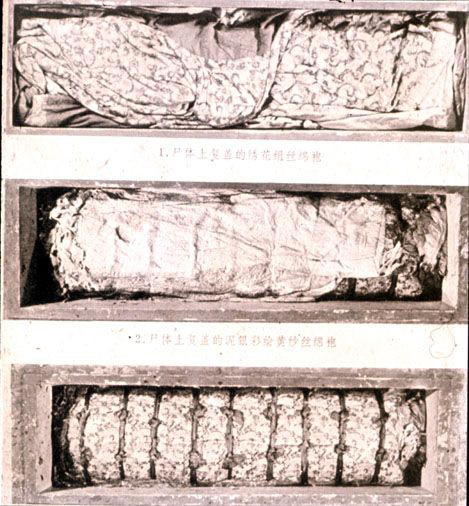T-shape funeral banner, Mawangdui Han Tomb No.3, 2nd century B.C.E., silk,(Hunan Provincial Museum)
Funeral banner of Lady Dai (Xin Zhui), 2nd century B.C.E., silk, 205 x 92 and 47.7 cm (Hunan Provincial Museum)

The tomb banner of Lady Dai uncovered at Mawang Dui can gives us some insights towards the question of the inscription of a narrative of the multiplicity of time. Eugene Y. Wang suggests a different perspective to read the painting which is through interpreting the different modes of time at play. The idea of cyclical time has been commonly adopted on various ritual artefacts to express the different cycles of the changing universe. For example, the cycle of seasons, the cycle of day and night, etc. the purpose of setting up the layers of cyclical time-scape through various symbols is to insert into it the tension through the linear time carried by another mythical element, or rather, in this case, a ‘mythical topography'.
T-shape funeral banner, Mawangdui Han Tomb No.3, 2nd century B.C.E., silk,(Hunan Provincial Museum)
Funeral banner of Lady Dai (Xin Zhui), 2nd century B.C.E., silk, 205 x 92 and 47.7 cm (Hunan Provincial Museum)
